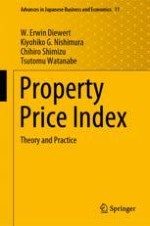
2020 | OriginalPaper | Buchkapitel
1. International Policy Discussion in Property Price Indices
verfasst von : W. Erwin Diewert, Kiyohiko G. Nishimura, Chihiro Shimizu, Tsutomu Watanabe
Erschienen in: Property Price Index
Verlag: Springer Japan
Aktivieren Sie unsere intelligente Suche, um passende Fachinhalte oder Patente zu finden.
Wählen Sie Textabschnitte aus um mit Künstlicher Intelligenz passenden Patente zu finden. powered by
Markieren Sie Textabschnitte, um KI-gestützt weitere passende Inhalte zu finden. powered by